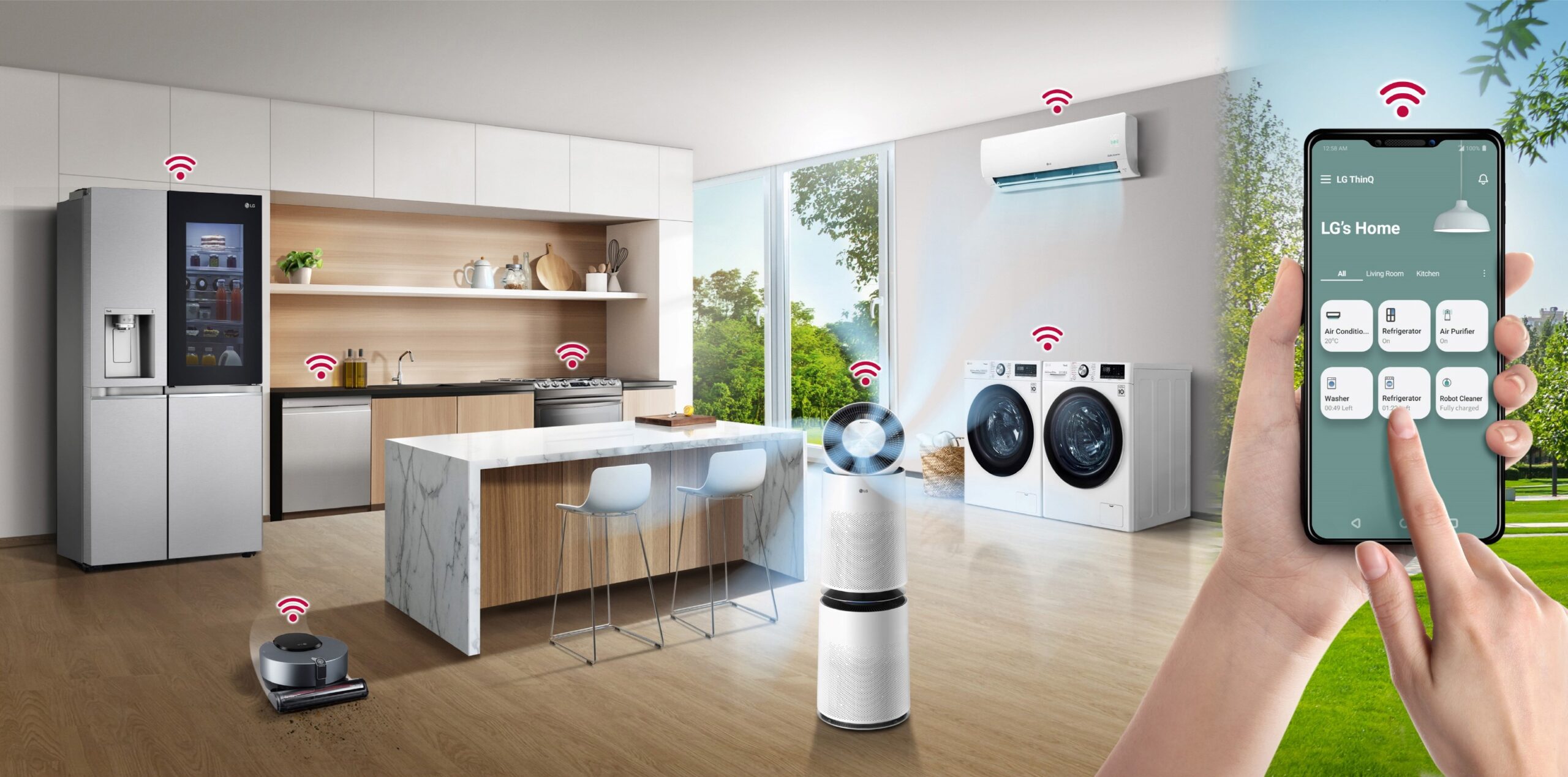Smart Home Appliances Market: Innovation, Demand, and Future Outlook
Smart Home Appliances Market: Innovation, Demand, and Future Outlook
Blog Article
The smart home appliances market has experienced explosive growth in recent years, redefining how people interact with their living spaces. Driven by technological advancements, increasing consumer demand for convenience, and the proliferation of smart ecosystems, this market is quickly becoming a cornerstone of the modern home.
Smart home appliances are no longer limited to high-end households. With the falling costs of sensors, microcontrollers, and wireless connectivity, smart devices such as refrigerators, washing machines, air conditioners, vacuum cleaners, and kitchen gadgets are now accessible to a broader audience. The ability to remotely monitor, control, and automate daily tasks has transformed the traditional home into a connected living experience.

Market Drivers and Trends
1. Rapid Urbanization and Smart City Projects
As urban centers expand and governments promote smart city initiatives, demand for connected living environments is growing. Consumers are adopting smart home appliances that improve comfort, security, and energy efficiency.
2. Advancements in IoT and AI
Internet of Things (IoT) and Artificial Intelligence (AI) technologies are central to the functionality of smart appliances. AI enables predictive maintenance, learning user preferences, and voice control integration through digital assistants like Alexa, Google Assistant, and Siri.
3. Increasing Demand for Energy Efficiency
Energy-efficient appliances help reduce utility bills and environmental impact. Many smart appliances offer features such as energy usage tracking, adaptive schedules, and eco-modes, making them appealing to environmentally conscious consumers.
4. Rising Disposable Income
Growing middle-class populations in developing countries are boosting sales in the smart home appliances market. As consumers prioritize convenience and lifestyle upgrades, smart appliances are becoming mainstream.
5. Remote Monitoring and Automation
The global shift to remote lifestyles has led to a surge in demand for appliances that can be controlled from smartphones. Whether adjusting the thermostat on the way home or starting a washing machine remotely, consumers now expect this level of automation.
Types of Smart Home Appliances
The smart home appliances market includes a diverse range of products, each designed to enhance convenience, security, and energy management:
Smart Refrigerators: Feature internal cameras, touchscreens, and inventory tracking.
Smart Washing Machines: Offer programmable cycles, detergent dispensers, and app-based control.
Smart Ovens and Microwaves: Enable remote temperature control, recipe integration, and voice commands.
Smart Air Conditioners: Allow real-time temperature monitoring and automatic climate control.
Smart Vacuum Cleaners: Use mapping technology and AI for autonomous cleaning schedules.
Smart Dishwashers: Include sensors for load detection and energy-saving modes.
Smart Coffee Makers and Kitchen Gadgets: Programmable from phones or scheduled via voice assistants.
Regional Insights
North America
North America leads the smart home appliances market, driven by early adoption, high internet penetration, and the presence of major technology companies. The United States has a mature consumer base that prioritizes convenience and energy efficiency.
Europe
Europe follows closely, with countries like Germany, the UK, and France leading smart home adoption. EU regulations promoting sustainability and energy efficiency are also pushing consumers toward smart appliances.
Asia-Pacific
Asia-Pacific is the fastest-growing market due to rising urbanization, growing tech-savvy populations, and increasing disposable income. Countries such as China, Japan, South Korea, and India are key contributors.
Latin America, Middle East, and Africa
These regions are witnessing gradual adoption of smart home appliances as infrastructure improves and consumer awareness grows. Increasing smartphone penetration is also contributing to growth.
Challenges in the Market
Despite the strong growth trajectory, the smart home appliances market faces several challenges:
Privacy and Data Security: Smart appliances often collect and transmit personal data, raising concerns about cybersecurity and data breaches.
High Initial Costs: While long-term energy savings are significant, many consumers are deterred by the higher upfront cost of smart appliances.
Lack of Standardization: Integration issues between appliances from different brands can create fragmented user experiences.
Limited Internet Access in Rural Areas: Smart functionality often depends on high-speed internet, which remains limited in many rural or developing regions.
Competitive Landscape
Key players in the smart home appliances market include:
LG Electronics
Samsung Electronics
Whirlpool Corporation
Haier Group
Electrolux AB
Panasonic Corporation
Bosch Home Appliances
Miele & Cie. KG
GE Appliances
Xiaomi Corporation
These companies invest heavily in R&D to integrate new features like AI, voice assistants, and sustainability enhancements into their products.
Future Outlook
The future of the smart home appliances market looks promising. With continuous innovation, increasing connectivity, and changing consumer lifestyles, the market is set to expand further. Key trends likely to shape the future include:
Integration with Renewable Energy Systems: Smart appliances will increasingly be connected to home solar panels and energy storage systems.
Subscription-Based Models: Appliance-as-a-service may become common, allowing consumers to access the latest technology through affordable monthly plans.
Personalization: AI-powered personalization will make smart appliances more responsive to individual habits and preferences.
Enhanced Interoperability: Standardized platforms and ecosystems will improve compatibility across devices from different brands.
Conclusion
The smart home appliances market represents a significant shift in how people live, work, and interact with their homes. As the line between technology and daily living continues to blur, smart appliances will become indispensable tools in creating more efficient, comfortable, and connected lifestyles. With ongoing innovation, supportive government policies, and growing consumer awareness, the market is expected to grow substantially in the coming years, redefining modern living on a global scale.
Related Trending Reports
| FRAM Market |
| Machine Condition Monitoring Market |
| 3D Metrology Market |
| Digital Panel Meter Market |
| EMC Shielding and Test Equipment Market |